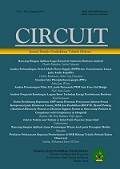Peningkatan Hasil Belajar Siswa Pada Mata Pelajaran Elektronika Dasar Dalam Materi Hukum Ohm Dengan Menggunakan Metode Demonstrasi Di Kelas X Smk Muhammadiyah 1 Banda Aceh
DOI:
https://doi.org/10.22373/crc.v2i2.3704Keywords:
Learning Outcomes, Demonstration.Abstract
The implementation of demonstration methods in productive learning is very influential on the level of student learning success in SMK. The results of observation indicated that many student learning outcomes of SMK were below average. This was caused by teachers who did not apply the demonstration method in the lesson, so it affect their learning ability. This study aims to determine the level of students learning success at class X SMK Muhammadiyah 1 Banda Aceh by applying the methods of demonstration on Basic Electronics subjects. This research is a quantitative research using pre- experiment design method: one-group pretest-posttest design. Data were collected through pretest, posttest and questionnaires. Then the data was processed by using t-test. The results of the study revealed that there are differences in learning outcomes of students of class X SMK Muhammadiyah 1 Banda Aceh between after and before applied methods of demonstration. This can be seen from the average score of student achievement achieved on pretest < posttest (74.5 < 80.5). After analyzed by using the t- test formula obtained t-count = 1.96. While t-table obtained by using dk = n-1, dk = 10-1 = 9 at a significant level of 5%, ie 0.251. Base on the initial hypothesis of this study, it indicated that, if tcount > ttable (1,96> 0,521), Ha is accepted. Thus it can be concluded that the implementation of demonstration methods can improve student learning outcomes of class X SMK Muhammadiyah 1 Banda Aceh.Downloads
Published
2018-11-04
Issue
Section
Articles
License
Authors who publish in CIRCUIT: Jurnal Ilmiah Pendidikan Teknik Elektro agree to the following terms:
- Authors retain copyright and grant the journal right of first publication with the work licensed under a Creative Commons Attribution-ShareAlike 4.0 International License (CC BY-SA 4.0) that allows others to share and adapt the work with an acknowledgement of the authorship and initial publication in this journal
- Authors are able to enter into separate, additional contractual arrangements for the non-exclusive distribution of the journal's published version of the work (e.g., post it to an institutional repository or publish it in a book), with an acknowledgment of its initial publication in this journal.
- Authors are permitted and encouraged to post their work online (e.g., in institutional repositories or on their website) prior to and during the submission process, as it can lead to productive exchanges, as well as earlier and greater citation of published work. (See The Effect of Open Acces)

